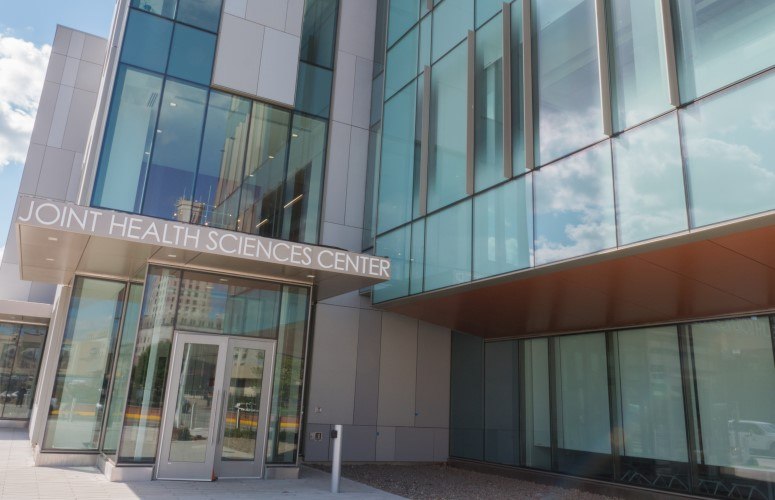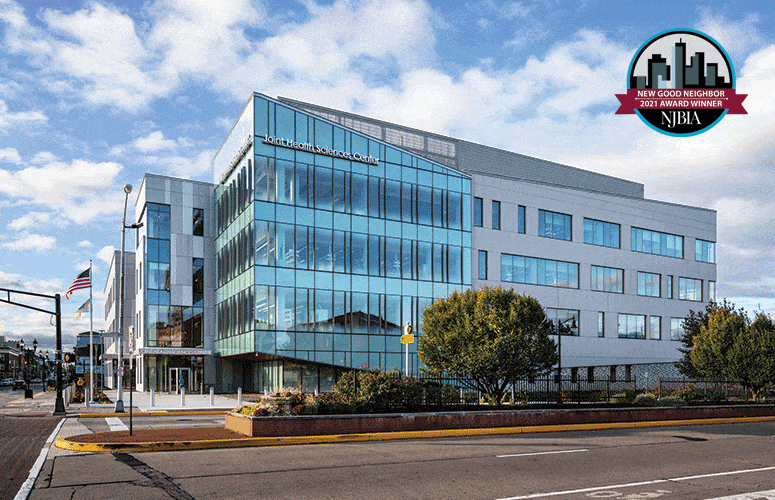
Joint Health Sciences Center Opens in Camden
By Jim Pytell, Assistant Editor On Oct 16, 2019Officials gathered in Camden’s “eds and meds” corridor yesterday to celebrate the opening of the Joint Health Sciences Center (JHSC). This $70-million, four-story building will be used by Rowan University, Rutgers University–Camden, Camden County College and Cooper Medical School of Rowan University for research, education and training.
The collaborative nature of the center is unique, as it is the only facility in the state to house important functions of two four-year institutions, a county college and two medical schools. The goal is to facilitate joint research.
The building, located on the corner of Martin Luther King Boulevard and Broadway, includes research laboratory space for Rowan University and Rutgers University-Camden, simulation rooms for medical students at Cooper Medical School of Rowan University, instructional space and simulation labs for Camden County College, office space for the Board of Governors, a first-floor café, a rooftop terrace, and general-use multipurpose spaces.
Camden Mayor Dana Redd said the center is poised to become the research and innovation hub of South Jersey and will be the beating heart of the city’s eds and meds corridor.
“The JHSC represents the promise of economic sustainability in Camden long after this building is opened,” says Chairman of the Rowan University/Rutgers–Camden Board of Governors, Jack Collins. “Because of the unprecedented collaboration taking place here, Camden will see accelerated job growth, increased investment in businesses and start-ups, and an influx of professionals and students who will actively participate in the local economy.”
“This building is the future,” adds Mike Sepanic, associate chancellor for external relations, Rutgers University–Camden. “It’s an example of how to maximize public investment in growth. It provides each institution with a facility that each needs individually, but the people of New Jersey are paying for one building instead of three. And, not only does it maximize public investment, but now you have researchers from different institutions and different research backgrounds who are working in the same space. That’s how cross pollination happens, and how research partnerships that otherwise might not emerge, happen.”
To access more business news, visit NJB News Now.
Related Articles:





